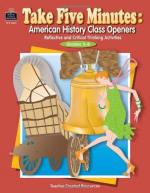|
This section contains 465 words (approx. 2 pages at 300 words per page) |

|
During the period of colonization Native Americans produced Christian art and architecture under the direction of European friars which defies standard art historical stylistic categories. Traditionally twentieth-century art historians have described it as mestizo or tequitqui art. Mestizo is a racial term meaning "of mixed Europeanindigenous descent." Tequitqui is a Nahuatl, or Aztec, word meaning "one who pays tribute." Both terms represent attempts to recognize the unique nature of New World cultural production. Recently the more neutral label of "Indo- Christian art" has come to replace these racially loaded terms. The label "Indo-Christian" more accurately reflects the mixed, syncretic heritage of these cultural products.
Sources:
George Kubler, "On the Colonial Extinction of the Motifs of Pre-Columbian Art," in Essays in Pre-Columbian Art and Archaeology, by S. K. Lothrop and others (Cambridge, Mass.: Harvard University Press, 1961), pp. 14-34;
Alfred Neumeyer, "The Indian Contribution...
|
This section contains 465 words (approx. 2 pages at 300 words per page) |

|




